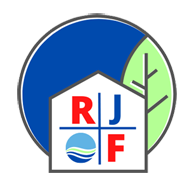The term “Sick Building Syndrome” (SBS) is used to describe situations in which building occupants experience acute health and comfort effects that appear to be linked to time spent in a building, but no specific illness or cause can be identified. Common complaints are due to mold odors, headaches, sinus problems, and/or congestion. Occupants feeling ill inside the dwelling, but are fine outside can be due to mold, dust, and mildew or water intrusion.
The following have been cited by the EPA as causes of or contributing factors to sick building syndrome:
Inadequate ventilation: In many cases reduced outdoor air ventilation rates are found to be inadequate to maintain the health and comfort of building occupants. Inadequate ventilation, which may also occur if heating, ventilating, and air conditioning (HVAC) systems do not effectively distribute air to people in the building, is thought to be an important factor in SBS. In an effort to achieve acceptable IAQ while minimizing energy consumption, the American Society of Heating, Refrigerating and Air-Conditioning Engineers (ASHRAE) recently revised its ventilation standard to provide a minimum of 15 cfm of outdoor air per person (20 cfm/person in office spaces).
Chemical contaminants from indoor sources: Most indoor air pollution comes from sources inside the building. For example, adhesives, carpeting, upholstery, manufactured wood products, copy machines, pesticides, and cleaning agents may emit volatile organic compounds (VOCs), including formaldehyde. Environmental tobacco smoke contributes high levels of VOCs, other toxic compounds, and respirable particulate matter. Research shows that some VOCs can cause chronic and acute health effects at high concentrations, and some are known carcinogens. Low to moderate levels of multiple VOCs may also produce acute reactions. Combustion products such as carbon monoxide, nitrogen dioxide, as well as respirable particles, can come from unvented kerosene and gas space heaters, woodstoves, fireplaces and gas stoves.
Chemical contaminants from outdoor sources: The outdoor air that enters a building can be a source of indoor air pollution. For example, pollutants from motor vehicle exhausts; plumbing vents, and building exhausts (e.g., bathrooms and kitchens) can enter the building through poorly located air intake vents, windows, and other openings. In addition, combustion products can enter a building from a nearby garage.
Biological contaminants: Bacteria, molds, pollen, and viruses are types of biological contaminants. These contaminants may breed in stagnant water that has accumulated in ducts, humidifiers and drain pans, or where water has collected on ceiling tiles, carpeting, or insulation. Sometimes insects or bird droppings can be a source of biological contaminants. Physical symptoms related to biological contamination include cough, chest tightness, fever, chills, muscle aches, and allergic responses such as mucous membrane irritation and upper respiratory congestion.
RJF Environmental Consulting Services will conduct a walkthrough that includes documenting easily obtainable information about the history of the building and of the complaints; identifying known HVAC zones and complaint areas. The walkthrough itself entails visual inspection of critical building areas and consultation with occupants and staff. After the initial walkthrough, our Certified Indoor Environmentalists should have sufficient information to formulate a hypothesis, test the hypothesis, and see if the problem is solved. The process of formulating hypotheses, testing them, and evaluating them continues until the problem is solved.
RJF Environmental Consulting Services will obtain certain basic measurements e.g., temperature, relative humidity, CO2, and air movement, to provide a useful “snapshot” of current building conditions and aid in the resolution on sick building syndrome.
Solutions to sick building syndrome usually include combinations of the following:
Pollutant source removal or modification – examples include routine maintenance of HVAC systems, e.g., periodic cleaning or replacement of filters; replacement of water-stained ceiling tile and carpeting; institution of smoking restrictions; venting contaminant source emissions to the outdoors; storage and use of paints, adhesives, solvents, and pesticides in well-ventilated areas, and use of these pollutant sources during periods of non-occupancy; and allowing time for building materials in new or remodeled areas to off-gas pollutants before occupancy. Several of these options may be exercised at one time.
Increasing ventilation rates and air distribution often can be a cost-effective means of reducing indoor pollutant levels. When there are strong pollutant sources, local exhaust ventilation may be appropriate to exhaust contaminated air directly from the building. Local exhaust ventilation is particularly recommended to remove pollutants that accumulate in specific areas such as restrooms, copy rooms, and printing facilities.
Air cleaning can be a useful adjunct to source control and ventilation. High-performance air filters can capture the smaller, respirable particles of pollutants. Often filters of a higher grade can begin to solve some of the common indoor air complaints.

